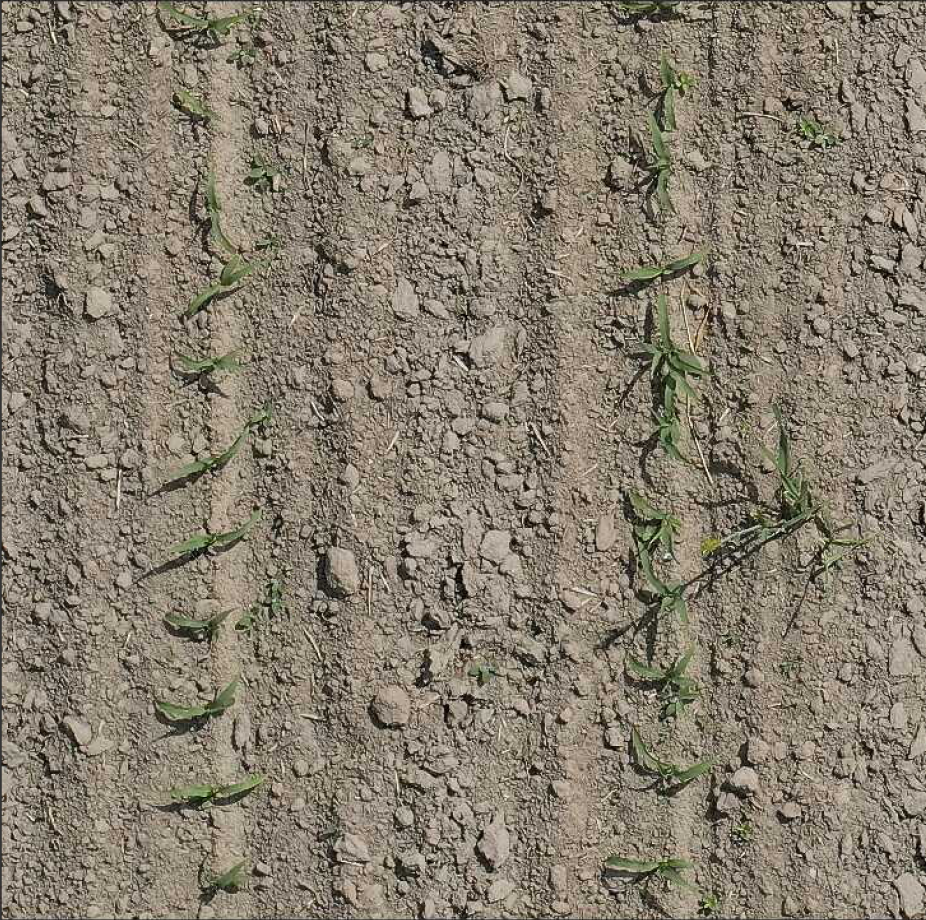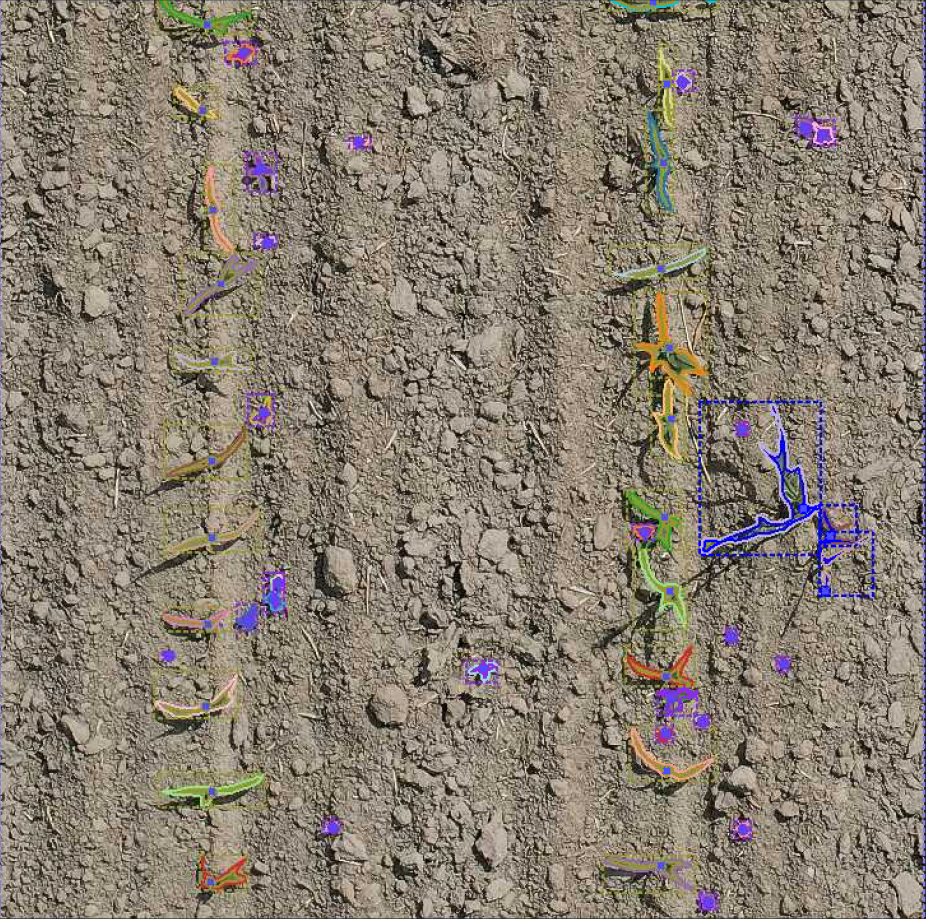Individual Plant Recognition in Corn (Maize)
Individual Plant Recognition in Corn (Maize)
Individual plant recognition in corn (maize) is a significant service crucial for plant breeders, agricultural researchers, and farmers. Manual scoring of corn plants in a plot is time-consuming and laborious but reveals important characteristics of the plants throughout their growth. With the latest AI image analysis, drone and smartphone images can be used for efficient scoring to analyze various characteristics such as coverage, row spacing, plant spacing, and inhomogeneous distribution in a plot. These methods enable predictions about growth and yield. Additionally, continuous seasonal monitoring of plots in breeding research provides insights into the quality of different corn varieties under varying conditions. Pheno-Inspect follows the corn plant from germination to row closure, including tassel formation, providing efficient and consistent predictions across all plots. Accurate knowledge of the number of corn plants is crucial for assessing seed quality and overall plant performance.
In corn, individual plant recognition poses a particular challenge early in the season due to the rapid overlapping of plants in the row. Here, Pheno-Inspect’s advanced AI can provide a solution, effectively differentiating overlapping plants. Reliable individual plant recognition can be achieved in the BBCH growth stages between 10 and 18, which is crucial for precise monitoring and assessment of plant growth.
The picture above shows the result of an AI image analysis in a maize plot. Individual maize plants (yellow) can be distinguished from weeds. Dicots (violet) and monocots (blue) are recognized independently.
Pheno-Inspect also performs precise size determination alongside counting corn plants. This data is crucial to capture variation in the number, size, and spatial distribution of plants, which are important parameters for agricultural research and plant production. This information enables a more detailed analysis of plant growth and a more accurate forecast of yield potential.
Digital Phenotyping – Delivered in a Single Workflow

Why each plant?
The Importance of Plant Counting, Size Determination, and Variation Analysis
In modern agriculture and plant breeding, accurate data collection and analysis of plants play a crucial role. Methods such as plant counting, size determination, and analysis of variation within plant populations are indispensable for gaining informed insights into the condition and performance of crops. These techniques provide valuable information that is important not only for improving varieties and cultivation methods but also for optimizing yields and minimizing environmental impacts.
Plant counting allows for the precise determination of the number of plants per unit area. This information is crucial in assessing seed quality, germination rate, and the growth potential of a crop. Additionally, determining the size of plants provides key indicators of their health and development. It helps in identifying growth trends and making necessary adjustments in cultivation.
Analyzing the variation within a plant population is equally important. It reveals the homogeneity and heterogeneity of a crop, which is of great significance in breeding research and selecting robust varieties. Inhomogeneities may indicate varying growth conditions, disease infestation, or other stress factors that need to be addressed.
Integrating these methods into modern agricultural practices and research, supported by advanced technologies such as drones and AI-based algorithms, is revolutionizing plant breeding, agricultural research, and plant production. It enables more precise and efficient decision-making, contributing to sustainable increases in agricultural productivity and environmental conservation.

Pheno-Inspect Provides The Tool – You Do the Research!
Digital Plant assessments
Essential as a tool!
Digital assessments play a crucial role in modern agriculture and plant research. They enable precise and efficient assessment of plants and field trials, which are essential for seed and variety development, crop protection, and fertilization strategies. Traditional methods of plant evaluation are often time-consuming and labor-intensive and can only provide limited amounts of data. This is where digitalization offers groundbreaking progress. With technologies such as drones, smartphones and advanced image processing based on artificial intelligence, each plant can be captured and assessed individually. This enables a comprehensive and precise analysis of large field areas and thus significantly improves the quality and informative value of field trials.
The use of digital assessments has several advantages: it increases efficiency by automating data collection, increases the accuracy of the data, and enables a georeferenced and detailed evaluation of test plots. These techniques can be applied to various crops and issues and open up new possibilities in plant research and agriculture. Our web-based solution for the automatic evaluation of exact and strip trials is an example of the power of digital scoring. It offers a user-friendly, integrated platform seamlessly integrated into existing workflows and enables comprehensive analyses across different locations and points in time. With digital scoring, we drive plant research and agriculture innovation to develop more sustainable and efficient cultivation strategies.






